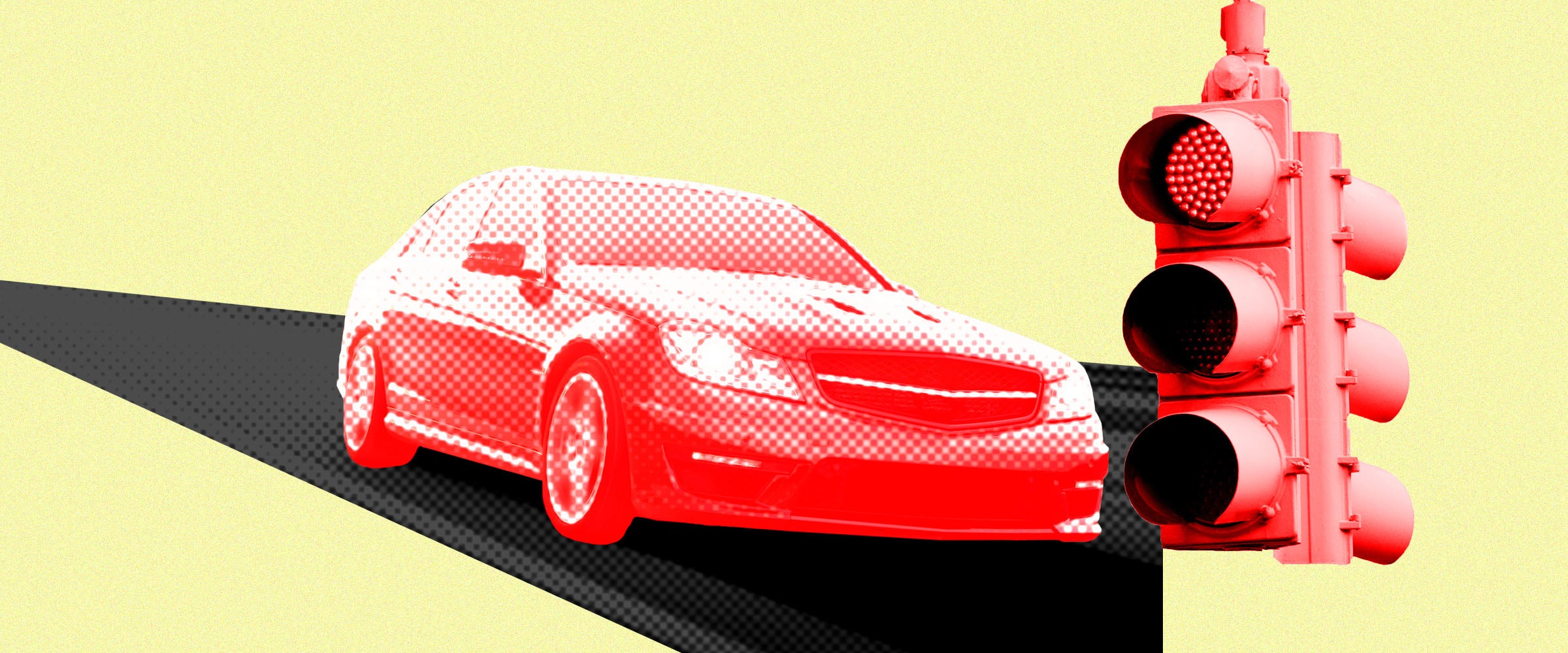We all sleep through our alarm every so often, and when this happens, many of us attempt to make up for lost time by speeding to work and honking at EVERY FUCKING MORON along the way.
But does speeding really get us to our destination any faster? Not exactly.
James Moore, director of the USC Transportation Engineering Program, points to the extensive system of synchronized traffic lights in L.A. to show that speeding — especially in a congested city — is essentially futile. He explains that the traffic signals in L.A. (and many other major cities) are coordinated to ensure that drivers encounter long strings of green lights, but this only happens when said drivers remain in their so-called platoons by going the speed limit. Therefore, attempting to speed past your own platoon to catch up with the one up ahead will likely result in you running directly into red light after red light.
“My advice is that, if you want to maximize progress, go with the flow and take advantage of the excellent work that the Los Angeles Department of Transportation does with respect to signal coordination,” Moore says.
Theoretically, though, what if we pretend that traffic lights (and all other delays) are off the table? Would speeding still be pointless?
Let’s do some basic math using this handy travel-time calculator:
- Example #1: A 15-mile drive at 35 miles per hour (the speed limit) would take 25 minutes and 43 seconds, while the same drive at 45 miles per hour (10 miles per hour over the speed limit) would take exactly 20 minutes, meaning you’d save five minutes and 43 seconds by speeding.
- Example #2: A 50-mile drive at 65 miles per hour (the speed limit) would take 46 minutes and nine seconds, while the same drive at 75 miles per hour (10 miles per hour over the speed limit) would take exactly 40 minutes, meaning you’d save six minutes and nine seconds by speeding.
- Example #3: A 500-mile drive at 75 miles per hour (the speed limit) would take six hours and 40 minutes, while the same drive at 85 miles per hour (10 miles per hour over the speed limit) would take five hours, 52 minutes and 56 seconds, meaning you’d save 47 minutes and four seconds by speeding.
All in all, the amount of time that you actually save by speeding is basically negligible except during long road trips (and speeding for nearly six hours straight certainly ups your chances of getting a ticket). It’s also worth remembering that traffic lights and congestion could quickly reduce any of these savings.
Another interesting takeaway is that you actually gain less time by speeding when the speed limit is already relatively high to begin with. For instance, look back at example number one, where we saved five minutes and 43 seconds by going 10 miles per hour over the 35 mile per hour speed limit. Now let’s look at that same example when we raise the speed limit to 45 miles per hour:
- A 15-mile drive at 45 miles per hour (the speed limit) would take exactly 20 minutes, while the same drive at 55 miles per hour (10 miles per hour over the speed limit) would take 16 minutes and 22 seconds, meaning you’d save only three minutes and 38 seconds by speeding (compared to five minutes and 43 seconds when the speed limit was 10 miles per hour lower).
This concept also applies to long-distance drives, which you can see if we raise the speed limit of example number three from 75 miles per hour to 85 miles per hour:
- A 500-mile drive at 85 miles per hour (the speed limit) would take five hours, six minutes and 42 seconds, while the same drive at 95 miles per hour (10 miles per hour over the speed limit) would take four hours, 34 minutes and 25 seconds, meaning you’d save only 32 minutes and 17 seconds by speeding (compared to 47 minutes and four seconds when the speed limit was 10 miles per hour lower).
In other words, speeding becomes even less worth it when you’re already going fast no matter the distance (and again, while you do save more time when speeding over long distances, you also drastically increase your chances of being pulled over).
It could theoretically be argued that you might be able to catch up to the platoon ahead of you (or even the platoon ahead of them) by speeding, which would obviously help you get to your destination significantly (albeit immeasurably) faster. However, thinking back to what Moore mentioned above, that seems pretty unlikely, especially if you’re driving around a city with synchronized traffic lights. So we’ll just assume that this argument is null.
It’s also worth mentioning that speeding can significantly reduce your fuel efficiency — for example, driving 65 miles per hour, rather than 55 miles per hour, reduces your fuel economy by anywhere from 10 to 15 percent.
But if these weak savings (and gas-guzzling effects) don’t dissuade you from speeding, consider also the dangers of pushing the pedal to the metal: Speeding resulted in 10,111 death nationwide in 2016, accounting for 27 percent of all traffic fatalities that year.
Now are those three minutes and 38 seconds really worth it?

